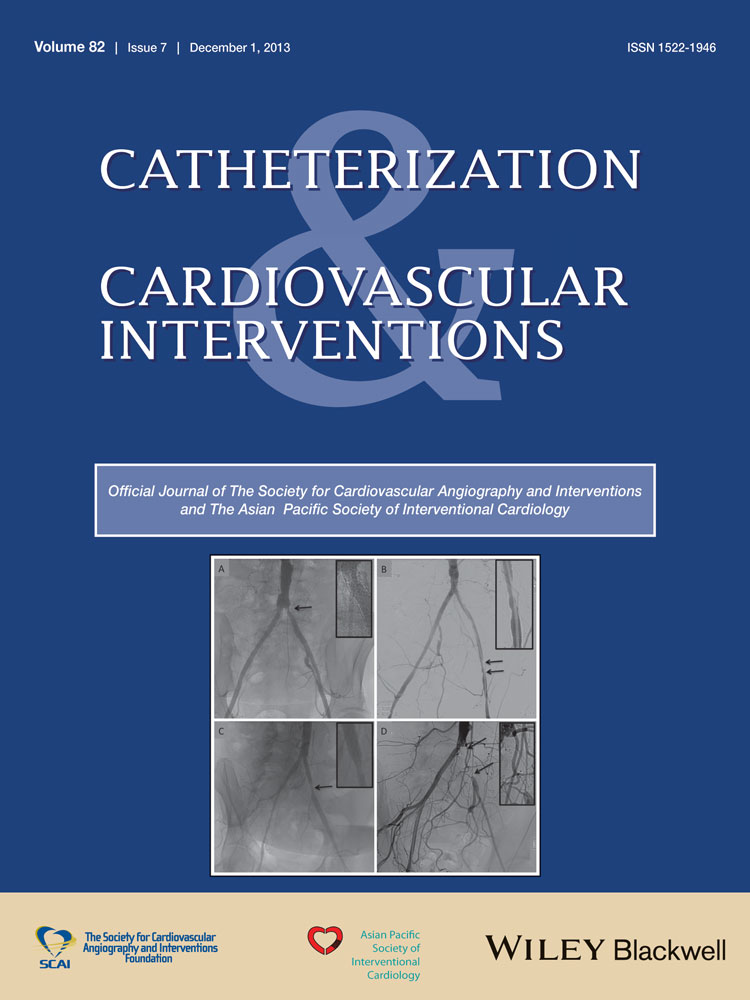Multiple cerebral emboli following dislocation and retraction of a partially deployed CoreValve prosthesis during transcatheter aortic valve implantation
Conflict of interest: Blackman is a proctor for Medtronic CoreValve
Abstract
Transcatheter aortic valve implantation for patients with severe aortic stenosis at a high-operative risk has been demonstrated to improve mortality compared to standard medical therapy. Registry data and the PARTNER trial have shown a significant risk of stroke (3–5%) following the procedure. Studies using cerebral diffusion-weighted magnetic resonance imaging have suggested the mechanism of stroke to be multiple small embolic infarcts, possibly from aortic atheroma dislodged during the movement of the valve and its apparatus around the thoracic aorta. The incidence of these infarcts is higher than clinically apparent. The Medtronic CoreValve (Medtronic, Minneapolis, Minnesota) prosthesis is a self-expanding nitinol frame with porcine valve, whose deployment is achieved by the retraction of the delivery catheter. Potential complications of this method include valve mal-positioning and dislocation. The partially deployed valve may then be resheathed following retraction back into the descending aorta and subsequently redeployed. We present two such cases with evidence of both “silent” and clinically evident cerebral infarction. © 2013 Wiley Periodicals, Inc.




